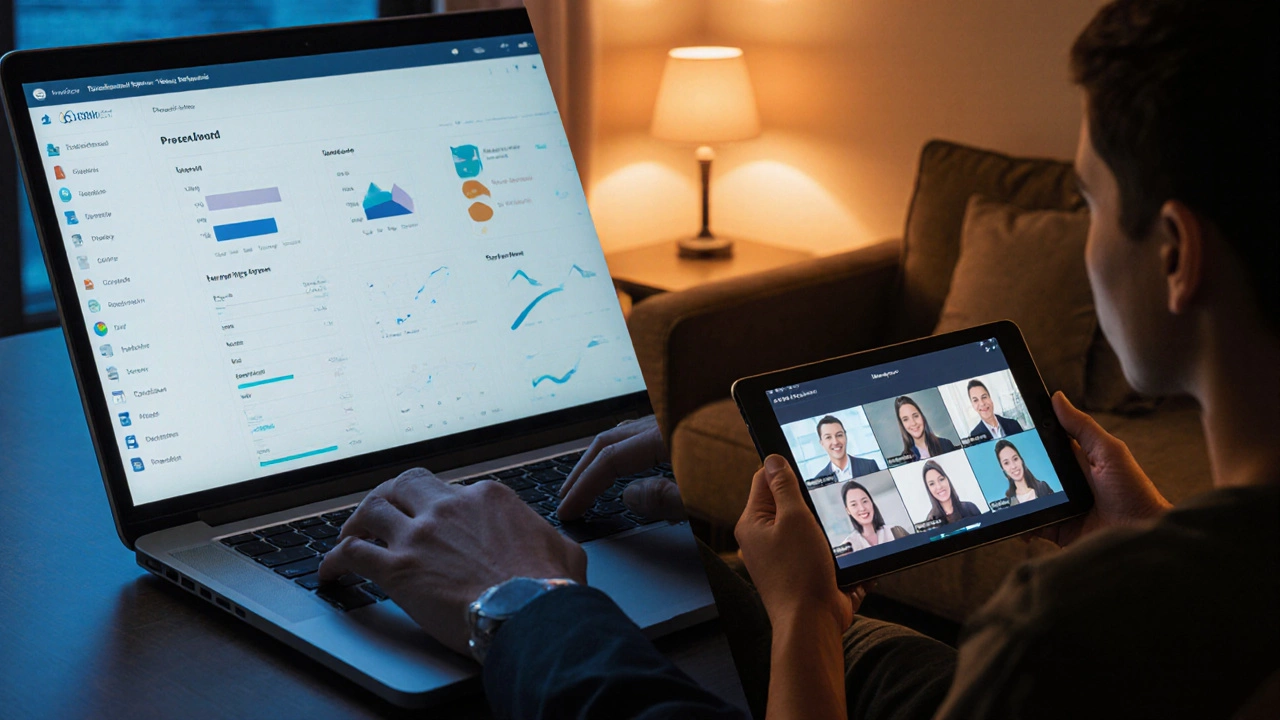When you hear people talk about eLearning vs online learning, the terms often get used interchangeably, but they actually describe distinct approaches to digital education. Understanding the nuance can help you pick the right tool for corporate training, university courses, or personal skill‑building.
What Exactly Is eLearning?
eLearning is a structured, often self‑paced learning experience delivered via digital platforms that include pre‑designed curricula, assessments, and progress tracking. It grew out of the early 2000s when companies adopted Learning Management Systems (LMS) to standardise employee onboarding.
According to a 2024 market report, the global eLearning industry is worth over $400billion and is projected to grow 9% annually, driven largely by corporate reskilling initiatives.
What Is Online Learning?
Online learning is any educational activity that happens over the internet, ranging from live webinars to recorded video lectures. The phrase gained popularity with the rise of Massive Open Online Courses (MOOCs) and video‑conferencing tools during the 2020 pandemic.
While eLearning usually implies a closed, managed environment, online learning can be open‑ended, allowing anyone with an internet connection to join a class.
Core Characteristics that Set Them Apart
- Curriculum Control: eLearning courses are typically curated by a single organisation; online learning may aggregate content from multiple providers.
- Platform Dependency: eLearning relies heavily on an LMS that tracks scores, certificates, and compliance; online learning often uses generic tools like Zoom or YouTube.
- Assessment Rigor: eLearning integrates built‑in quizzes and automated grading; online learning may rely on peer review or optional tests.
- Interaction Mode: eLearning can be fully asynchronous, while online learning frequently blends synchronous sessions (live lectures) with asynchronous materials.
Technology Stack Behind Each Approach
Both models share some tech, but the emphasis differs. For eLearning, the backbone is a robust LMS that handles user authentication, content sequencing, and compliance reporting. Popular LMSs include Moodle, Blackboard, and Canvas.
Online learning leans on video‑hosting platforms, webinar software, and community forums. Tools such as Zoom, Google Meet, and discussion boards like Reddit’s education sub‑communities play a big part.
A hybrid solution-sometimes called blended learning-combines the LMS‑driven structure of eLearning with live online sessions, giving learners the best of both worlds.
Pedagogical Styles: Synchronous vs Asynchronous
eLearning is primarily asynchronous. Learners log in whenever they can, complete modules at their own speed, and receive instant feedback from quizzes.
Online learning often features synchronous elements-real‑time Q&A, group breakouts, and live polls-that mimic a traditional classroom feel.
Research from the University of Manchester (2023) shows that courses mixing both styles improve knowledge retention by 23% compared to purely asynchronous programs.
Certification, Accreditation, and Credibility
eLearning modules are frequently tied to formal accreditation bodies. For example, a compliance eLearning course for GDPR might be certified by the International Association of Privacy Professionals, granting a verifiable badge.
Online learning courses, especially MOOCs, often issue a “certificate of completion” that may or may not be recognised by employers. Platforms like Coursera partner with universities to offer credit‑eligible certificates, but the acceptance varies.
Who Usually Chooses Which Model?
Corporate trainers favour eLearning because they need to track progress, enforce deadlines, and prove regulatory compliance. A multinational bank, for instance, rolled out a mandatory anti‑money‑laundering eLearning program to 15,000 staff in Q12024, achieving a 98% completion rate thanks to automated reminders.
Universities and individual learners often opt for online learning for its flexibility and access to world‑class faculty. A student in Nairobi can attend a live lecture from a professor at MIT via an online learning platform, something traditional eLearning setups rarely support.

Side‑by‑Side Comparison
| Aspect | eLearning | Online Learning |
|---|---|---|
| Typical Platform | LMS (Moodle, Canvas) | Video & webinar tools (Zoom, YouTube) |
| Learning Pace | Mostly asynchronous | Blend of synchronous & asynchronous |
| Assessment Rigor | Embedded quizzes, automated grading | Peer reviews, optional quizzes |
| Certification | Often accredited, traceable badges | Certificates of completion, variable credibility |
| Target Audience | Corporate, regulated industries | Higher ed, lifelong learners |
| Cost Model | License‑based per‑user fees | Often freemium or subscription |
Choosing the Right Fit for Your Needs
- Define your goals. Need compliance tracking? Go eLearning. Want global reach and live interaction? Consider online learning.
- Assess technology readiness. Do you already have an LMS? Leverage it. If not, lightweight webinar tools may be enough.
- Consider learner demographics. Busy professionals appreciate self‑paced modules; students often value real‑time engagement.
- Calculate budget. LMS licences can be pricey for small teams, while many online learning platforms operate on a per‑course fee.
- Plan for evaluation. Set KPIs-completion rates for eLearning, participation scores for online learning-to measure success.
Many organisations end up using a hybrid model: core compliance content lives in an LMS (eLearning), while leadership development happens through live virtual workshops (online learning). The key is to align the delivery method with the learning objective.
Frequently Asked Questions
Is eLearning the same as online learning?
No. eLearning usually refers to structured courses managed through an LMS with built‑in tracking and assessment, whereas online learning is a broader term covering any educational activity that occurs over the internet, including live webinars and open MOOCs.
Which method is better for employee compliance training?
Compliance training benefits from eLearning because the LMS can enforce deadlines, log completion data, and issue accredited certificates that satisfy regulatory audits.
Can I use a free platform for online learning?
Yes. Many educators rely on free video‑hosting services (YouTube, Vimeo) and video‑conferencing tools (Zoom’s free tier) to deliver live sessions, though they may lack advanced reporting features.
What is a blended learning approach?
Blended learning combines the structured, self‑paced modules of eLearning with synchronous online sessions, allowing learners to benefit from both independent study and real‑time interaction.
How do I measure the success of an online learning program?
Key metrics include participation rates, post‑session quiz scores, learner satisfaction surveys, and, for corporate settings, performance improvements or reduced error rates after training.

Write a comment